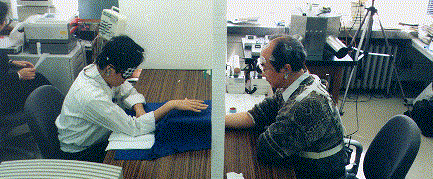 Project Activity (Second Year)
Project Activity (Second Year)
 Project Activity (Second Year)
Project Activity (Second Year)
 Researches in the Second Year
Researches in the Second Year

 References
References
1) Mikio YAMAMOTO, Masahiko HIRASAWA, Hideyuki KOKUBO, Kimiko KAWANO, Tomoko KOKADO, Tsuyoshi HIRATA and Nakahiro YASUDA: Journal of International Society of Life Information Science, 15, 88-96, 1997.
2) Hideyuki KOKUBO, Tsuyoshi HIRATA, Masahiko HIRASAWA, Masayuki HIRAFUJI, Takaaki OHTA, Shinya ITO, Tomoko KOKADO and Mikio YAMAMOTO: Journal of International Society of Life Information Science, 15, 97-108, 1997.
3) Kimiko KAWANO, Mikio YAMOAMOTO, Masahiko HIRASAWA, Hideyuki KOKUBO and Nakahiro YASUDA: Journal of International Society of Life Information Science, 15, 109-114, 1997.
4)
Masahiko HIRASAWA, Akira FURUKAWA and Mikio YAMAMOTO: Journal of International Society of Life Information Science, 15, 253-259, 1997
Last Modified: April 1, 1998
Maintained by KOKUBO Hideyuki